Everything about pineapple and its cultivation
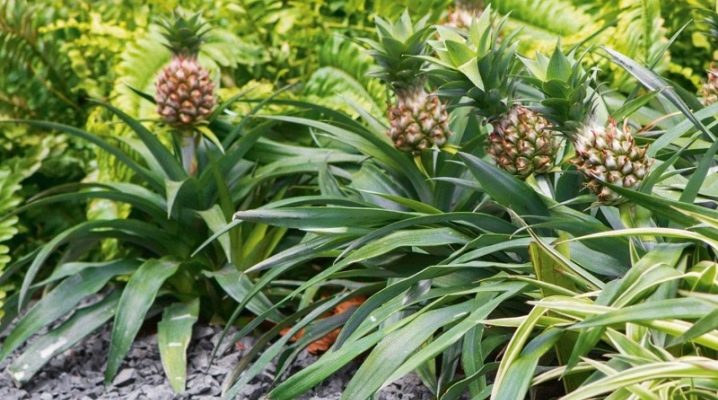
Exotic fruits and vegetables are increasingly cultivated in Russian latitudes, and pineapple is no exception. Questions about how it looks and grows in nature, whether it is a fruit, berry or vegetable, arise from many enthusiastic summer residents. A detailed overview will allow you to properly plant and grow pineapple from the top at home, on a windowsill or in a greenhouse.
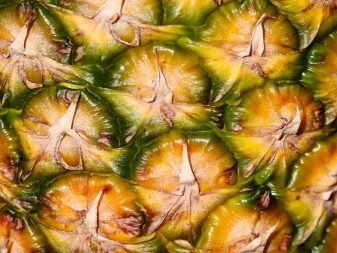
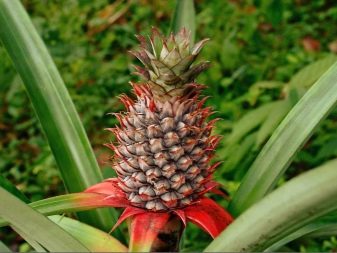
general description
The desire to understand whether pineapple is a fruit, berry or vegetable is expressed by many gardeners. In fact, the Ananas comosus plant is a herbaceous perennial of the bromeliad family. The names of the species and genus are the same. The botanical name for this plant is crested pineapple, large-crested or real pineapple. In nature, it grows exclusively in tropical climates. The most common plant in the countries of South America, where the crop is planted on plantations for subsequent sale. And also pineapples are grown in Thailand, India and Indonesia. They are not found in Russia, but they can be cultivated in greenhouses, as well as at home.
Pineapple looks typical for herbaceous culture. The total height of the plant rarely reaches more than 60 cm. Its leaf rosette is formed from succulent succulent leaves with serrated edges. They are elongated and narrow, with a rough structure. Pineapple blooms, forming an arrow-like stem. At its top, an ear appears, formed by separate corollas arranged in a spiral. The flowers grow together, wrapping around the column. The ovary is formed from 3 carpels, on which a three-celled placenta is formed.
When fully ripe, the pineapple turns into a fruit. By this time, it forms a large pineal fruit, gaining weight up to 2 kg. Its outer shell is colored golden brown, with a bunch of short leaves on top.
Seeds are not formed in cultivated pineapple varieties. Unripe fruits contain a corrosive acid that can irritate the mucous membranes.
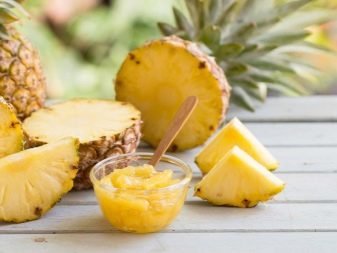

Views
Large-crested pineapple is usually divided into groups and varieties. Some of them are bred specifically for cultivation for sale, others are formed in nature. There are 4 main categories.
- Smooth Cayenne. A subspecies with an extended maturation cycle, weak shoots. The ripe fruit is yellow with dense textured flesh and weighs between 1.5 and 2.5 kg. Such pineapples are grown in the Hawaiian and Philippine Islands, South Africa, Puerto Rico, Australia, Cuba and Mexico. The most popular varieties are Esmeralda, Typhoon, Maipuri, Kew.
- Amritha. A hybrid with thorny leaves, ripening from 13 to 15 months. Pineapples have a small crown weighing up to 100 g. The fruits are easily and well peeled, turn yellow when ripe, and have a pleasant light aroma. The pulp is slightly acidic inside, with a good taste, dense, without pronounced fiber.
- Mauritius. One of the most popular commercial pineapple varieties, it is well transported and tastes good. Vazhakulam, or "Kannara", is part of the Royal group. The fruits of the Mauritius pineapples are smaller, weighing 1.3-1.6 kg. They are appreciated for their low acidity, optimal vitamin and mineral balance, and high carotene content.
- MD-2. A hybrid produced by the Hawaiian Research Institute breeding program.Its fruits are distinguished by increased sweetness, are painted in a bright golden color, and are well stored. This is the benchmark for the international market, with over 50% of Central and South America's harvests since 1996 coming from this hybrid.
It is customary to consider indoor or decorative varieties separately. The most common of these is Ananas Nanas. Plants form reddish leaves in a rosette, spectacular flowers. Such pineapples are very popular among landscape designers, they look spectacular in landscaping. Among the inedible representatives of the bromeliad family, there are also quite interesting options.
For growing at home, pineapple bracts striped with creamy pink lines on the leaves is suitable. Its fruits are miniature and decorative.
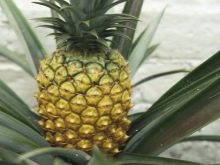
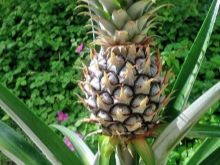

The nuances of growing outdoors
For industrial cultivation, special early maturing varieties and farming technologies are used. Growing pineapples outdoors is possible only in the tropical climate zone with a hot and humid climate. You can plant it correctly, taking into account the following points.
- Pre-rooted cuttings with a height of 20 cm or more are prepared for placement.
- Pineapple seedlings are arranged in rows, with a distance of 1.5-2 m between them.
- To obtain ovaries in the total mass, in order to enhance flowering, treatment with acetylene is used. Aeration stimulates the formation of flower buds.
- To protect against pollination, the inflorescences that appear are covered with special caps or placed in a translucent paper bag.
- Watering is organized in a mechanized way. Fertilizers and pest control chemicals are distributed through the same system.
Subject to all the rules, you can shoot up to 3 pineapple harvests per year.
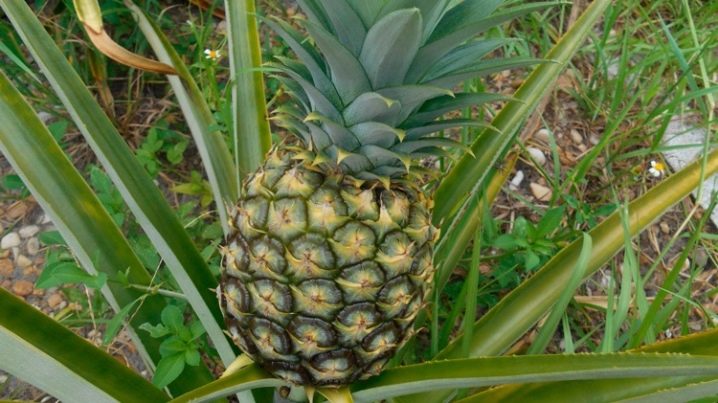
How to grow in a greenhouse?
The greenhouse method is used to grow tropical crops in countries with colder climates. Here pineapples are successfully cultivated even on a very thin layer of nutrient substrate. It is prepared on the basis of humus, peat, garden soil, charcoal and perlite. When pineapples are grown in greenhouses, they are provided with regular watering with acidified water. The temperature of the liquid for irrigation is maintained in the same way as the air in a greenhouse.
The soil should be in a loose and wet state, no stagnation of water in it is allowed. If this rule is violated, the root and stem parts may rot. To stimulate fruiting, pineapples in the shelter are fumigated with smoke or treated with acetylene. After aeration, it is important to control insect infiltration to prevent pollination.
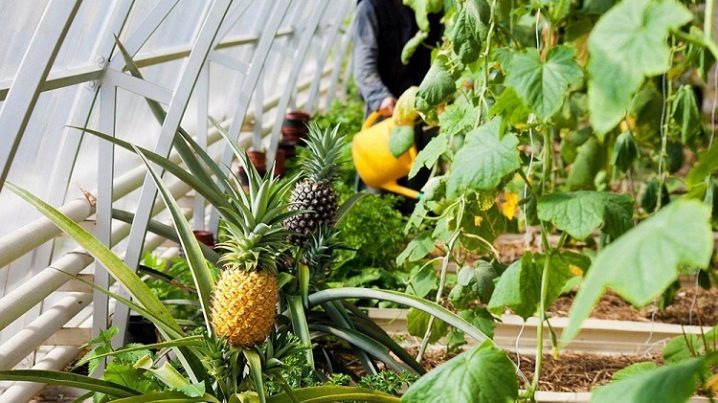
Growing at home
At home, the easiest way to get a pineapple sapling is from the cut top. For the selection of planting material, fruits of medium ripeness are best suited, not green, without the softness and lethargy of the peel. A rosette with brown leaves or signs of yellowing, drying cannot be planted in a pot. It is important to properly cut off the transplantable part of the pineapple. Step by step, this process looks like this.
- Hand protection with gloves.
- Grasping the green part of the rosette with a hand.
- Slowly rolling the green leaf bundle.
- Removing the stem. In an incompletely ripe fruit, it is trimmed with a knife to facilitate movement.
The leaves are then cut with roots at a 45 degree angle. The remaining pulp is peeled off. The bottom row of leaves is removed. Until planting, the rosette is germinated on the windowsill, placing the stem 3-4 cm in a container with water. A cup or glass with opaque walls will do. Until the roots appear, the pineapple is kept warm and exposed to light. However, he should not come into contact with direct sunlight. Within a month, the stem will show signs of rooting.

Landing
At this stage, you will need a pot of soil. The best substrate is orchid mix. The bottom is drained. The diameter of the pot is selected according to the size of the fruit, but with a volume of no more than 4 liters, low bowls are preferable to high ones.You can plant the top without preliminary formation of roots in water, disinfecting it in a manganese solution, and then drying it for 3-5 days. The stalk is placed in a pot with a nutrient substrate, lightly watered.
A greenhouse from a stretched film is arranged on top to ensure that the temperature inside is maintained at least +25 degrees. With direct planting, rooting takes up to one and a half months. During this time, the pineapple is periodically watered and ventilated. The film is removed only after the formation of independent roots.
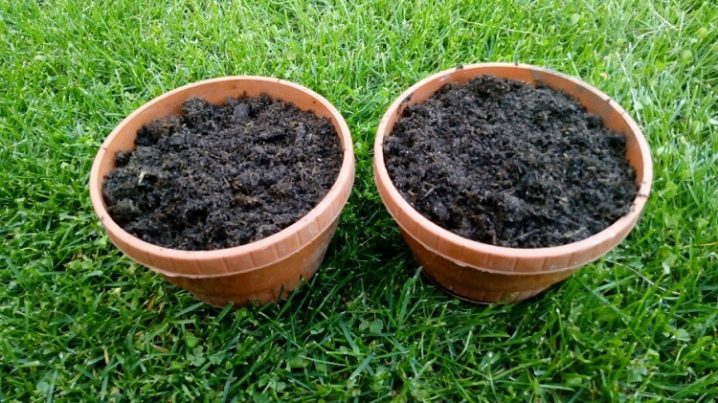
Care
Since the pineapple seedling does not bloom during the first year of life, it will need to be looked after according to the standard scheme. The plant is kept at a temperature of 25 to 30 degrees Celsius. Watering is carried out with slightly acidified soft water. Air humidity is maintained at about 70%. Homemade pineapple seedlings are fed with complex fertilizers for bromeliads.
You can apply them under the root or by spraying. It is important that all the necessary minerals and trace elements are present in the composition. Pineapple can be transplanted only before flowering. This is done for 2 years of cultivation. The pot is selected more, taking into account the growth of the outlet. After flowering, transplantation is performed only by separating the daughter rosettes. When salt deposits fall out, the top soil layer in the pot is replaced.
To stimulate flowering at home, starting from 2 years old, you can use one of the proven methods.
- Aeration with ethylene. It is isolated by cut apples. They are laid out around the pot, changing periodically. You can remove the cut fruits only after the arrow appears on the rosette of leaves.
- Watering with calcium carbide solution. It is prepared on the basis of 500 ml of water and 5 ml of the preparation. The resulting liquid is used to irrigate the pineapple instead of water. The filling is done inside the outlet every day for a week.
With the successful formation of fruits on the outlet, their ripening will take about 3-4 months. The general course of all processes before harvesting takes up to one and a half years.
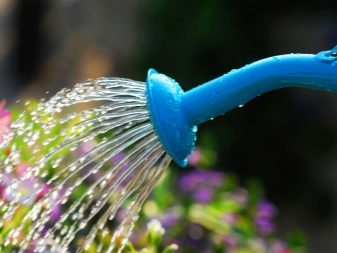
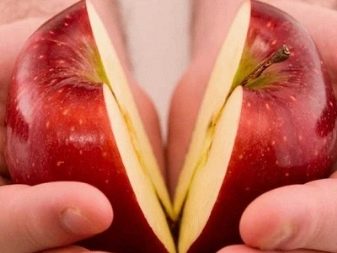
Reproduction
You cannot get a decorative or hybrid pineapple from seeds. But from varietal and wild-growing crops, you can select seeds for subsequent planting. They are obtained from overripe fruits, from the cells under the skin. The resulting planting material is sent to the ground, then it must be provided with sufficient care. With successful germination, pineapple from seeds will begin to bear fruit in 3-5 years.
Much faster this plant reproduces by the tops. In this way, you can get both fruiting and exclusively decorative pineapples. The green rosette is cut along with part of the top. And also for reproduction, you can use the lateral shoots that have given roots with pineal babies.
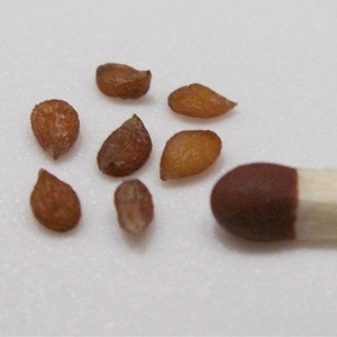
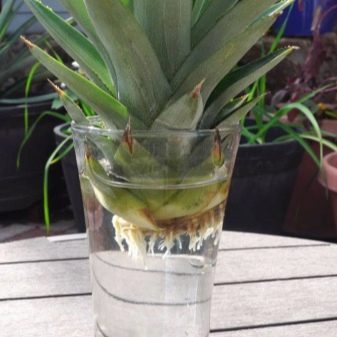
Diseases and pests
Pineapple, like other plants of the bromeliad family, can be attacked by pests. It is customary to distinguish several insects that are most dangerous for him at home.
- Spider mite. When it appears, the succulent leaves of the plant turn yellow and become stained. The plant can dry out and die. A pot with signs of infection must be rinsed under a shower with a water temperature of about +45 degrees 3 times with an interval of 7 days between procedures. Washing the leaves with green soap is also helpful.
- Bromeliad shield. Looks like brown plaques on the surface of the leaves. Insects dry out the outlet, lead to its death. You can fight the scabbard with soap foam. Wash it off with warm water, repeating the treatment as needed.
- Mealybug. On the plant, it looks like a lump of fluff, reminiscent of cotton wool, in the root zone. At the same time, signs of a sooty fungus may appear on the shoots. You can destroy the pest by manually treating the plant with an alcohol solution on a cotton swab. Then chemical insecticides are used to treat shoots and soil.
By following these helpful tips, you can grow pineapple on a windowsill or in a greenhouse on your own, effortlessly. When planting for harvesting, attention must be paid to the selection of material. Sweet varieties such as Mauritius and MD-2 are best suited.
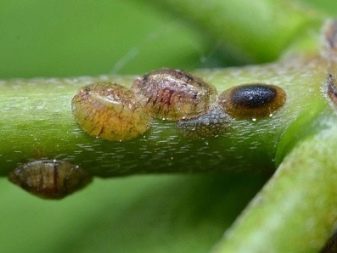
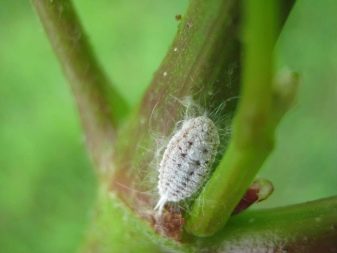













The comment was sent successfully.